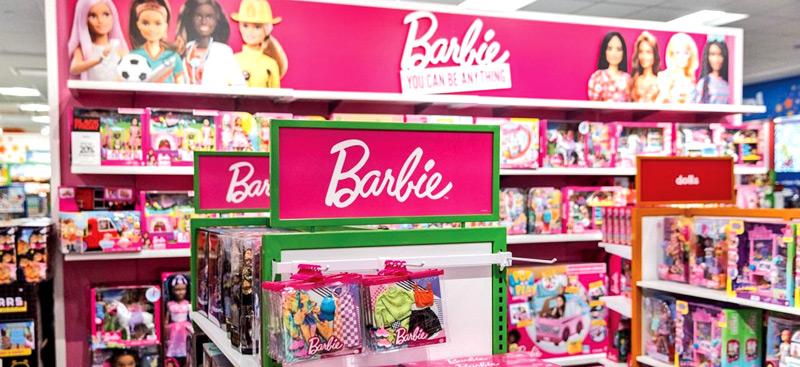
Barbie is one of biggest and longest lasting names in the world of toys, with few brands having a near comparable impact, being a part of a massive multi media empire spanning decades.
Manufactured by toy giant Mattel, this revolutionary doll has become a global fashion icon, inspiring generations of children and adults alike. With the recent successful release of the Barbie (2023) movie, Barbie has once more forced its way back into the spotlight, warranting a reexamination of its initial explosive rise to popularity, and somewhat controversial status as an intergenerational role model.
Barbie was first created in 1959 when Ruth Handler, the co-founder and then president of Mattel, observed her daughter Barbara playing with paper dolls, imagining adult roles, inspiring Ruth to invent a three dimensional doll that could represent a real adult woman that girls might want to be, and not just an infant or child which was what dolls predominantly were at the time. Though initially Handler’s idea was met with skepticism, she inspired confidence by discovering an existing German doll brand Bild Lilli by Greiner & Hausser Gmbh. Lili, or Bild Lilli was based on a newspaper comic strip of the same name aimed at adults.
The Lili toys were primarily a joke gift for adults, though children did enjoy being able to dress them up. Handler completely aped Lili’s design with only a few key changes, later leading to lawsuits over copyright that was resolved when Mattel bought the patents and rights to Lili.
Debut
Barbie made her debut at the American International Toy Fair in New York City on March 9, 1959. She was an instant hit, with her stylish look and an extensive wardrobe that allowed children to explore their imagination in endless ways. Initially criticized for promoting an unrealistic body image, Barbie eventually proved to be much more than just a pretty face, as she represented an adult woman with diverse career choices and aspirations, something severely lacking in toys and media oriented towards young girls at the time.
The original lore for the character was that of Barbara “Barbie” Millicent Roberts, a teenage model with many sisters. Over time, the Barbie franchise ditched the extra names, and embraced wider diversity, introducing dolls of different ethnicities and aged up the dolls to a vaguely aged adult, allowing access to a wide range of professions.
Barbie has accumulated over 200 careers, with some in STEM fields. Some of the more weirdly specific ones include Renewable energy engineer, Sign language teacher, MLM Mary Kay consultant, and Farmer’s market stall owner.
Expansion
As every other internationally popular toyline, Barbie has expanded into many successful multimedia ventures over the years. Most notably, she has starred in a long running series of CGI animated films, becoming one of the highest grossing media franchises of all time, only just behind the Harry Potter franchise in terms of sales. Since 2001, the series spawned over 40 unique Barbie animated films, based off of popular fairy tales and original stories. This is in addition to the endless supply of TV shows, video games, books, comics, board games and more. The franchise also faced some controversies and major criticisms over time. Critics argued that Barbie still perpetuated unrealistic beauty standards, with some studies linking it to some eating disorders in children. The doll was specifically designed to have an unrealistically small waist, and a lot of accompanying material encouraged unhealthy lifestyle habits to maintain a similar figure. This has given rise to a mindset dubbed the “Barbie Syndrome”, wherein people, mostly preteen or adolescent girls, want to emulate the appearance and lifestyle of a Barbie doll, resulting in eating disorders and obsessions with cosmetic surgery.
Proactive approach
In more recent years, Mattel has taken a more proactive approach to address body image criticisms offering dolls with different body types, skin tones, and hairstyles. Though even the ‘curvy’ Barbie is still quite small. They also celebrated real-life women, with dolls representing big names such as Frida Kahlo and Amelia Earhart. The new Barbie movie seems to indicate an acute awareness by Mattel of these critiques, with the film’s themes lampooning many of the stereotypes and mindsets that the brand had inadvertently inspired over the years.
